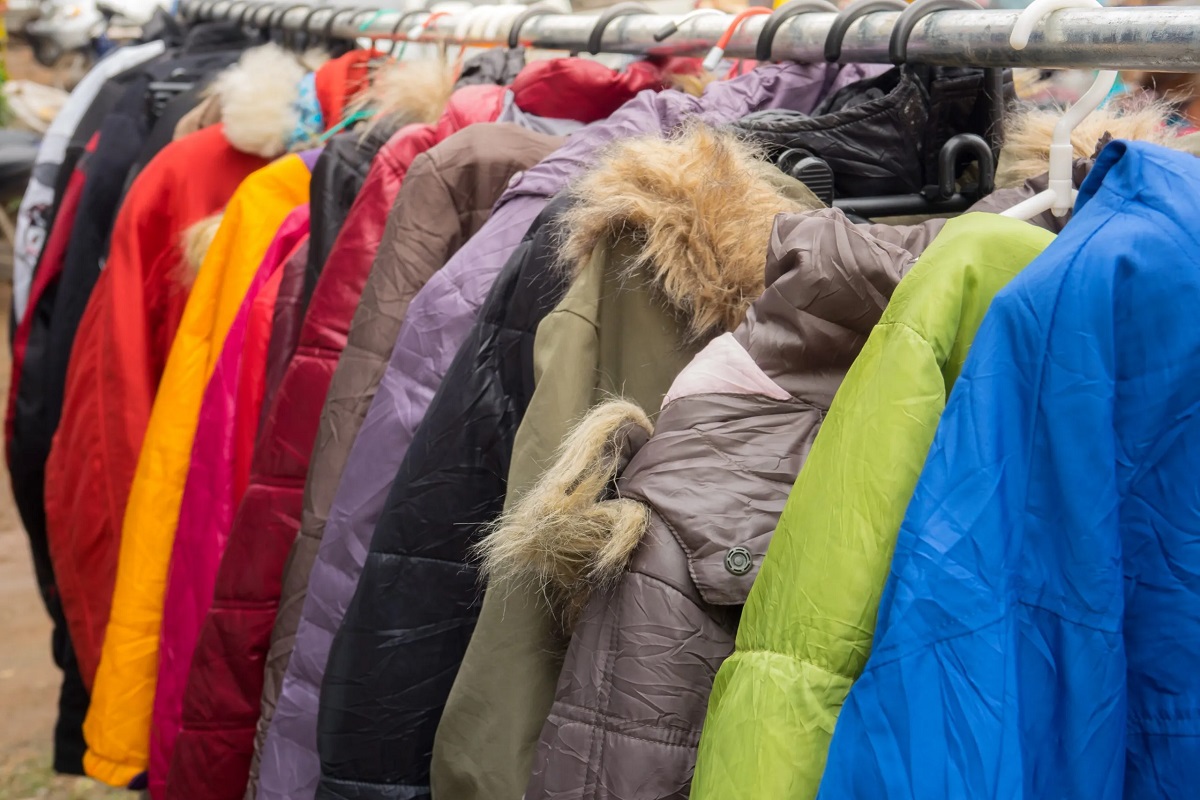

Articles
How To Store Winter Coats In Summer
Modified: February 23, 2024
Learn how to properly store your winter coats during the summer months with these helpful articles.
(Many of the links in this article redirect to a specific reviewed product. Your purchase of these products through affiliate links helps to generate commission for Storables.com, at no extra cost. Learn more)
Introduction
As the summer heat rolls in, it’s time to bid farewell to our trusty winter coats and make room for lighter and more seasonally appropriate attire. But what should you do with your winter coats during the summer months? Proper storage is crucial to ensure that your coats stay in good condition and are ready to keep you warm when the colder weather returns. In this article, we will guide you through the process of storing your winter coats in the summer, from choosing the right storage location to maintaining their quality over time.
Why is proper storage important? Winter coats, especially those made from delicate fabrics or fur, can be easily damaged if not stored correctly. Exposure to sunlight, heat, moisture, and pests can all lead to a deterioration in the coat’s appearance and quality. By taking the time to store your coats properly, you can extend their lifespan, avoid unnecessary repairs, and ensure that they’ll be ready to wear when the next winter season arrives.
Key Takeaways:
- Properly storing winter coats in the summer is crucial to maintain their quality and ensure they’re ready for the next winter season. Choose the right storage location, clean and prepare your coats, and monitor their condition throughout the summer.
- Utilize garment bags, maximize storage space, and periodically revisit your storage method to protect your winter coats during the summer months. Proper care and maintenance will ensure your coats remain in top condition for future use.
Read more: How To Store Chocolate In Summer
Why proper storage is important
Proper storage is essential for maintaining the integrity and longevity of your winter coats. Here are a few key reasons why it is important to store your coats correctly:
- Preserve the fabric: Winter coats are often made from delicate materials such as wool, cashmere, or down. Improper storage, such as leaving them crumpled up in a corner or hanging them in direct sunlight, can cause the fabric to fade, stretch, or develop unwanted creases. By storing them appropriately, you can help preserve the fabric’s color, shape, and overall quality.
- Protect against pests: Moths and other fabric-eating pests can wreak havoc on your winter coats if not properly stored. These pests are attracted to natural fibers, such as wool and cashmere, and can cause irreparable damage. Storing your coats in airtight containers or using mothballs can help deter pests and keep your coats safe.
- Prevent odor and moisture buildup: If your coats are stored in a damp or humid environment, they may develop musty odors or even mold and mildew. This can be particularly problematic for coats made from natural materials. By storing them in a dry and well-ventilated space, you can prevent odor and moisture buildup, ensuring that your coats stay fresh and clean.
- Avoid unnecessary wrinkles: Improper storage can lead to unwanted wrinkles and creases in your winter coats. Hanging them incorrectly or cramming them into a crowded closet can result in stubborn wrinkles that are difficult to remove. By choosing the right storage method and paying attention to how your coats are hung or folded, you can minimize the risk of wrinkles and keep your coats looking their best.
By taking the time to store your winter coats properly, you can maintain their quality, extend their lifespan, and ensure that they are in top condition when the colder weather returns. Now that we understand the importance of proper storage, let’s explore the steps you can take to store your winter coats effectively.
Choosing the right storage location
When it comes to storing your winter coats, it’s crucial to select the right location. The ideal storage space should be cool, dry, and free from direct sunlight. Here are some factors to consider when choosing the right storage location:
- Closet or wardrobe: If you have enough space in your closet or wardrobe, this can be a convenient option for storing your winter coats. Ensure that the area is clean and dry, and consider using garment bags or covers to protect your coats from dust and potential damage.
- Under-bed storage: Utilizing under-bed storage containers can be a space-saving solution, especially if you have limited closet space. Look for containers with breathable materials that allow air circulation to prevent moisture buildup.
- Attic or basement: While attics and basements can sometimes be used for storage, they may not be the best option for winter coats. These areas tend to be more susceptible to temperature and humidity fluctuations, which can negatively affect the condition of your coats.
- Standalone storage unit: If you have a large collection of winter coats or limited storage space in your home, renting a standalone storage unit can provide a secure and climate-controlled environment. Just be sure to choose a reputable storage facility and properly clean and pack your coats before storing them.
Remember, the chosen storage location should provide protection from sunlight, heat, moisture, and pests. Additionally, consider the accessibility and convenience of the location, ensuring that you can easily retrieve your coats when needed without causing any unnecessary damage. Once you have selected the right storage location, the next step is to prepare your coats for storage.
Cleaning your winter coats
Before storing your winter coats for the summer, it’s important to give them a thorough cleaning. Cleaning your coats before storage helps remove any dirt, stains, or odors that may have accumulated during the winter season. Here are some tips for cleaning your winter coats:
- Read the care labels: Different coats may have specific cleaning instructions, so it’s important to read and follow the care labels. This will ensure that you clean your coats appropriately and avoid any damage to the fabric.
- Dry clean if necessary: If your coats are labeled as dry clean only, take them to a professional dry cleaner. They have the expertise and specialized equipment to safely and effectively clean your coats without causing any damage.
- Spot clean: If you have small stains on your coats, you can spot clean them using a gentle detergent or stain remover. Follow the instructions on the product and test it on a small, inconspicuous area first to ensure that it doesn’t cause any discoloration or damage.
- Air out: Before storing your coats, give them some time to air out. Hang them in a well-ventilated area, preferably outdoors, for a few hours to let any trapped odors dissipate.
- Brush or lint roll: Use a soft brush or lint roller to remove any surface dirt, lint, or pet hair from your coats. This helps keep them looking fresh and clean before storage.
- Repair any damages: Take a close look at your coats for any damages or loose threads. Repair them before storing to prevent further damage and ensure that your coats are in good condition when you need them again.
By properly cleaning your winter coats before storage, you can prevent any dirt or stains from becoming set and potentially causing long-term damage. Once your coats are clean, it’s time to decide whether to fold or hang them for storage.
Folding vs. hanging
When it comes to storing your winter coats, you have the option of folding them or hanging them. The choice between folding and hanging depends on several factors, such as the type of coat, available space, and personal preference. Here is a breakdown of the benefits and considerations for both methods:
Read more: How To Store A Fur Coat
Folding
Folding your winter coats can be a space-saving option, especially if you have limited closet space or are storing them in smaller containers. Here are some tips for folding your coats:
- Smooth out any wrinkles: Before folding your coats, ensure that they are free from wrinkles or creases. This helps maintain the coat’s shape and appearance.
- Use acid-free tissue paper: Place acid-free tissue paper between folds to prevent any color transfer and help maintain the coat’s integrity.
- Choose a flat surface: Find a clean, flat surface, such as a bed or table, to fold your coats. This makes it easier to ensure that the fold lines are straight and even.
- Avoid tight folds: Do not fold your coats too tightly, as this can cause unwanted creases. Instead, opt for loose folds that allow the coat to retain its shape.
- Stack carefully: If you’re stacking multiple coats, place a layer of acid-free tissue paper between each coat to prevent them from rubbing against each other and causing friction damage.
Hanging
Hanging your winter coats can be a preferable option if you have enough closet space and want to minimize the risk of wrinkles. Here are some considerations for hanging your coats:
- Use sturdy hangers: Invest in sturdy hangers that can support the weight of your coats without causing them to stretch or lose their shape. Padded hangers are also a good option for delicate materials.
- Avoid overstuffing: Do not overcrowd your coats in the closet. This can lead to wrinkles and make it difficult to find and retrieve a specific coat when needed.
- Button or zip up your coats: Before hanging your coats, button them up or zip them to help maintain their shape and prevent any stretching or distortion.
- Consider garment bags: For added protection, you can place your coats in garment bags before hanging them. This helps prevent dust, moths, or other potential damage.
Ultimately, the decision between folding and hanging your winter coats depends on your personal preference and storage constraints. Assess the available space and the condition of your coats to determine the best method for your needs. Regardless of your chosen method, make sure to store them in a cool and dry place to maintain their quality.
Using garment bags
When it comes to storing your winter coats, using garment bags can provide an extra layer of protection. Garment bags help shield your coats from dust, moisture, and potential damage, especially if they are stored for an extended period of time. Here are some tips for using garment bags effectively:
- Choose the right garment bag: Look for garment bags made of breathable materials, such as cotton or nylon. Avoid using plastic bags, as they can trap moisture and promote the growth of mold and mildew.
- Measure your coats: Ensure that the garment bags you choose are long enough to fully cover your coats. Ideally, they should be slightly longer than your coats to provide ample protection.
- Zip up completely: When placing your coats in the garment bags, make sure to zip them up fully. This prevents dust, pests, and moisture from entering and potentially damaging your coats.
- Use padded hangers: When hanging your coats in garment bags, opt for padded hangers. They provide additional support and help maintain the shape of your coats while reducing the risk of creases and wrinkles.
- Label your garment bags: To easily identify the coats stored in each garment bag, label them with the coat’s description or color. This can save you time when you need to retrieve a specific coat later.
- Store in a cool and dry place: Whether you hang the garment bags or fold them, make sure to store them in a cool, dry area away from direct sunlight and extreme temperature fluctuations.
Garment bags provide an added layer of protection for your winter coats, helping to keep them in pristine condition for the next winter season. However, if you choose not to use garment bags, ensure that your coats are stored in a clean and dust-free environment to prevent any unnecessary damage.
Storing in a cool and dry place
When it comes to storing your winter coats, finding a cool and dry place is essential to maintain their quality and prevent any damage. Here are some tips for storing your coats in a cool and dry environment:
- Avoid humidity: Moisture and humidity can promote the growth of mold, mildew, and bacteria, which can damage your coats. Choose a storage location that is free from excessive moisture, such as a basement or bathroom.
- Control temperature: Extreme temperatures can also affect the condition of your coats. Avoid storing them in areas prone to high heat or extreme cold, such as attics or garages. Opt for a location with a stable temperature, ideally between 50 to 70 degrees Fahrenheit (10 to 21 degrees Celsius).
- Keep away from direct sunlight: Exposure to direct sunlight can fade the color of your coats and cause the fabric to deteriorate. Select a storage area that is shielded from sunlight, or use a garment bag or cover to protect your coats if they are hung near windows.
- Avoid crowded spaces: When storing your coats, ensure that they have enough breathing room. Overcrowding can lead to unwanted wrinkles and make it difficult to find and retrieve specific coats when needed.
- Consider using a dehumidifier or moisture absorber: If your storage area tends to be damp, consider using a dehumidifier or moisture absorber to reduce moisture levels. This helps prevent mold and mildew growth and keeps your coats dry and fresh.
- Inspect your storage area regularly: Regularly check your storage area for any signs of moisture or pests. Address any issues promptly to prevent any potential damage to your coats.
By storing your coats in a cool and dry place, you can protect them from moisture, humidity, direct sunlight, and temperature fluctuations. This helps maintain their quality and preserve their appearance for the next winter season. However, ensuring a suitable storage environment is just one part of proper coat storage. The next section will address how to deal with moisture and humidity specifically.
Read more: How To Store Summer Clothes
Avoiding direct sunlight and heat
When it comes to storing your winter coats, it’s crucial to protect them from direct sunlight and heat. Exposure to sunlight and high temperatures can cause fading, discoloration, and damage to the fabric. Here are some tips to avoid direct sunlight and heat when storing your coats:
- Select a suitable storage location: Choose a storage area that is away from windows or any direct sources of sunlight. This will help shield your coats from the harmful UV rays that can fade and weaken the fabric.
- Use curtains or blinds: If you have no choice but to store your coats in a room with windows, use curtains or blinds to block out the sunlight. This will provide an additional layer of protection against harmful UV rays.
- Avoid hanging near heat sources: Do not hang your coats in close proximity to heaters, radiators, or any other heat sources. Excessive heat can cause the fabric to become brittle, shrink, or lose its shape.
- Consider using a garment bag: If your coats are hanging in a closet with windows or near heat sources, consider using a garment bag with UV protection. This will help shield your coats from both direct sunlight and heat.
- Rotate coat positions: If you have a coat rack near a window or heat source, rotate the positions of your coats regularly. This ensures that all your coats receive equal exposure to sunlight and heat, minimizing the risk of damage.
- Keep your coats covered: If your coats are stored in a location where they are exposed to sunlight or heat, cover them with a lightweight cloth or a sheet to provide an additional layer of protection.
By taking precautions to avoid direct sunlight and heat, you can preserve the color, texture, and overall quality of your winter coats. Remember, a cool and dry storage environment is ideal for maintaining the integrity of your coats. The next section will focus on dealing with moisture and humidity, which can also impact the condition of your coats during storage.
Dealing with moisture and humidity
Moisture and humidity can be detrimental to the condition of your winter coats during storage. Excess moisture can lead to mold, mildew, and unpleasant odors, while high humidity levels may cause the fabric to become damp and matted. To protect your coats from the damaging effects of moisture and humidity, follow these tips:
- Choose a dry storage location: Find a storage area that is dry and free from excessive humidity. Avoid storing your coats in areas such as basements or bathrooms, as they tend to have higher moisture levels.
- Use moisture-absorbing products: Place moisture-absorbing products such as silica gel packs, activated charcoal, or dehumidifiers in your storage space. These help minimize moisture and keep the environment dry.
- Ensure proper ventilation: Good air circulation is crucial in maintaining a dry storage environment. Make sure there is adequate ventilation in the storage area, as stagnant air can promote moisture buildup.
- Avoid plastic or airtight containers: While it may seem like a good idea to store your coats in airtight containers, doing so can trap moisture and lead to condensation. Instead, opt for breathable storage containers or garment bags that allow air to circulate.
- Check for leaks or water damage: Inspect your storage area for any signs of leaks or water damage. Address any issues immediately to prevent water from seeping into the storage space and damaging your coats.
- Regularly monitor humidity levels: Use a hygrometer to monitor the humidity levels in your storage area. Ideally, the humidity should be between 40% to 50% for optimal coat storage.
- Periodically air out your coats: Every few weeks, take your coats out of storage and give them some fresh air. Hang them in a well-ventilated area for a few hours to let any trapped moisture escape.
By taking these steps to combat moisture and humidity, you can prevent mold, mildew, and musty odors from developing on your winter coats. Keeping the storage area dry and well-ventilated is essential for maintaining the quality and longevity of your coats.
Removing any stains or odors
Before storing your winter coats, it’s important to ensure that they are free from any stains or odors. Here are some tips to help you remove stains and freshen up your coats:
- Spot treat stains: If you notice any stains on your coats, it’s best to address them before storing. Use a stain remover specifically designed for the fabric type of your coat and follow the instructions carefully. Test the product on a small, inconspicuous area first to ensure it doesn’t cause any discoloration or damage.
- Dry clean if necessary: For stubborn or larger stains, it may be necessary to take your coats to a professional dry cleaner. They have the expertise and specialized equipment to effectively remove tough stains without harming the fabric.
- Air out: If your coats have developed any unwanted odors, airing them out before storage can help freshen them up. Hang your coats in a well-ventilated area, preferably outdoors, for a few hours to allow the odors to dissipate.
- Use fabric fresheners: Consider using fabric fresheners or odor absorbers specifically designed for clothing. These products can help eliminate any lingering odor and leave your coats smelling fresh. Be sure to choose products that are safe for the fabric type of your coats.
- Store with fresheners: To prevent future odors from developing while in storage, place fragrant items such as lavender sachets, scented pouches, or cedar blocks in the storage area. These natural fresheners can help keep your coats smelling pleasant.
- Avoid using excessive perfumes or chemicals: While it may be tempting to mask any odors with strong perfumes or chemicals, it’s best to avoid using excessive amounts. These can leave residue on your coats and may cause unpleasant reactions with the fabric.
By removing any stains and odors from your winter coats, you can effectively maintain their cleanliness and freshness during storage. Taking the time to properly treat and clean your coats ensures that they’ll be in top condition and ready to wear when the next winter season arrives.
Proper storage for different coat materials
When it comes to storing your winter coats, it’s important to consider the specific care requirements of different materials. Each coat material has unique characteristics that may affect how you store and maintain them. Here are some guidelines for properly storing coats made from different materials:
Read more: How To Store Summer Tires
Wool and Cashmere
Wool and cashmere coats should be stored in a cool, dry place. Avoid hanging them in direct sunlight, as this can cause fading. Fold these coats using acid-free tissue paper between the folds to prevent creasing. Consider using a breathable garment bag to protect them from dust and pests.
Down and Puffer Jackets
Down and puffer jackets should be stored in a dry and well-ventilated area. Avoid compressing them too tightly, as this can damage the insulation. Consider using a large storage bag that allows for some air circulation. Fluff the jackets periodically to restore their loftiness.
Fur Coats
Fur coats require special care. It’s best to store them in a climate-controlled environment, such as a fur storage facility. Avoid hanging fur coats in plastic bags, as they can restrict air circulation and cause the fur to dry out. Use padded hangers and consider professional fur cleaning and conditioning before storage.
Leather Jackets
Leather jackets should be stored in a cool, dry place away from direct sunlight. To prevent the leather from drying out, use a leather conditioner before storage. Hang leather jackets on padded hangers to maintain their shape. Avoid folding them, as this can lead to permanent creases.
Read more: How To Store Coats In A Small Space
Synthetic Materials
Coats made from synthetic materials, such as nylon or polyester, are generally more resilient and can be stored similarly to wool or puffer coats. Fold them neatly or hang them in a cool, dry place. Follow the specific care instructions provided by the manufacturer for best results.
It’s important to note that these guidelines provide a general overview but may not cover the specific care requirements for every coat made from different materials. Always consult the care labels and manufacturer’s instructions for the most accurate and detailed guidelines on storing your specific coat materials.
Store winter coats in breathable garment bags or cotton storage bags to protect them from dust and moisture. Hang them in a cool, dry place to maintain their shape and quality.
Checking for any damages or repairs needed
Before storing your winter coats, it’s important to carefully inspect them for any damages or repairs needed. Identifying and addressing these issues before storage can prevent further damage and ensure that your coats are in good condition when you need them again. Here are some steps to follow when checking your coats:
- Check for loose threads: Examine the seams and edges of your coats for any loose threads. These can indicate areas that may need reinforcement or sewing to prevent unraveling.
- Inspect buttons and closures: Ensure that all buttons, snaps, zippers, and other closures are in good working condition. Replace any missing or damaged buttons and address any issues with closures promptly.
- Examine linings: Check the linings of your coats for any tears, rips, or fraying. Damaged linings can impact the overall structure and appearance of the coat.
- Look for stains and spots: Take a close look at your coats for any stains or spots that may need to be treated before storage. Addressing these stains early on can help prevent them from setting in and becoming more difficult to remove later.
- Inspect for structural damages: Check for any structural damages, such as holes, tears, or stretched-out areas. These issues may require professional repairs to restore the coat’s integrity.
- Check for missing accessories: Ensure that any removable accessories, such as belts or fur trims, are still intact and accounted for. Replace or repair any missing or damaged accessories.
If you discover any damages or repairs needed during the inspection, it’s best to take the necessary steps to address them before storing your coats. This can range from simple DIY repairs to seeking professional assistance, depending on the severity of the issue. By proactively addressing these concerns, you can ensure that your coats are ready to wear and in good condition when the colder weather returns.
Tips for maximizing space in your storage area
When it comes to storing your winter coats, effective space utilization can make a significant difference, especially if you have limited storage space available. Here are some tips to help you maximize space in your storage area:
- Use vacuum-sealed bags: Vacuum-sealed bags are a great option for compactly storing your coats. These bags remove excess air, reducing the size of your coats and maximizing storage space.
- Utilize vertical space: Make use of vertical space by installing hooks, racks, or additional hanging bars in your storage area. This allows you to store coats from floor to ceiling, making efficient use of the available space.
- Invest in space-saving hangers: Consider using hangers that are specifically designed to save space, such as slimline hangers or cascading hangers. These hangers take up less horizontal space, allowing you to fit more coats in your storage area.
- Organize with shelving or cubbies: Install shelves or cubbies in your storage area to effectively organize your coats. This allows you to stack or fold coats neatly, maximizing the use of each cubby or shelf.
- Label or categorize your coats: Use labels or clear storage bins to categorize and identify your coats. This makes it easier to locate specific coats without having to dig through the entire storage area, saving you time and effort.
- Utilize under-bed storage: If you have space under your bed, utilize it for storing coats. Invest in storage containers or bags designed for under-bed storage to keep your coats neatly tucked away and out of sight.
- Pack efficiently: When folding or rolling your coats, pack them in a way that maximizes space. Consider the thickness and bulkiness of each coat and arrange them accordingly to minimize wasted space.
- Combine offseason items: If you have other offseason items, such as sweaters or boots, store them alongside your coats. This consolidates storage space and allows you to make the most of the available area.
By implementing these tips, you can optimize the use of your storage area and fit more winter coats in a organized and efficient manner. Remember to consider your specific storage space limitations and customize these suggestions to best suit your needs and available resources.
Revisiting your storage method throughout the summer
While you may think that your job is done once you’ve stored your winter coats for the summer, it’s important to revisit your storage method periodically throughout the season. Checking on the condition of your coats and making any necessary adjustments can help ensure they remain in good shape and ready to wear when winter comes around again. Here are some reasons why revisiting your storage method is essential:
- Monitoring for moisture and humidity: Even in the summer, moisture and humidity can still find their way into your storage area. Regularly checking the humidity levels and inspecting for any signs of moisture or mold is crucial. This allows you to address any issues promptly to prevent damage to your coats.
- Checking for pests: Pests like moths or beetles can still be a problem during the summer months. Keep an eye out for any signs of insect activity, such as holes or droppings. If you find any, take appropriate steps to eliminate the pests and protect your coats.
- Inspecting for damages: Over time, damages or vulnerabilities may develop in your storage area that can impact the condition of your coats. Regularly inspect for any damage, such as leaks, cracks, or signs of pest infestation, that could compromise your coats’ safety.
- Airing out and refreshing: During the summer, it’s beneficial to periodically take your coats out of storage and allow them to air out. Hanging them in a well-ventilated area for a few hours can help freshen them up and prevent any musty odors from setting in.
- Reevaluating your storage method: As seasons change, you may need to adjust your storage method. Consider if you need to switch to different containers, replace any worn-out hangers, or make changes to accommodate any new coats you’ve acquired.
By revisiting your storage method throughout the summer, you can identify and address any issues promptly, ensuring the long-term protection and preservation of your winter coats. Regular maintenance and adjustments will help keep your coats in optimal condition, extending their lifespan and ensuring they are ready to serve you well when the cold weather returns.
Read more: How To Store Summer Sausage
Conclusion
Properly storing your winter coats in the summer is essential for maintaining their quality and ensuring they are ready to keep you warm and stylish when the colder weather returns. By following the tips and guidelines outlined in this article, you can preserve the integrity of your coats and prolong their lifespan.
Start by choosing the right storage location that is cool, dry, and free from direct sunlight. Clean your coats thoroughly, addressing any stains or odors before storage. Decide whether folding or hanging is the best method for your specific coats, considering space limitations and the type of coat material.
Utilize garment bags to provide additional protection against dust, pests, and potential damage. Store your coats in a cool and dry place, avoiding direct sunlight and heat exposure. Take measures to prevent moisture and humidity from causing harm to your coats. Address any damages or repairs that are needed before storage to ensure the coats remain in good condition.
Maximize your storage space by using vacuum-sealed bags, utilizing vertical space, and organizing your coats efficiently. Periodically revisit your storage method throughout the summer, monitoring for moisture, pests, and damages, as well as refreshing and reevaluating your storage method as needed.
By following these guidelines and taking the time to properly store and maintain your winter coats, you can protect your investment and enjoy them for many seasons to come. So, bid farewell to your winter coats for now, knowing they will be safely stored and ready to embrace you with warmth and style when winter returns.
Frequently Asked Questions about How To Store Winter Coats In Summer
Was this page helpful?
At Storables.com, we guarantee accurate and reliable information. Our content, validated by Expert Board Contributors, is crafted following stringent Editorial Policies. We're committed to providing you with well-researched, expert-backed insights for all your informational needs.


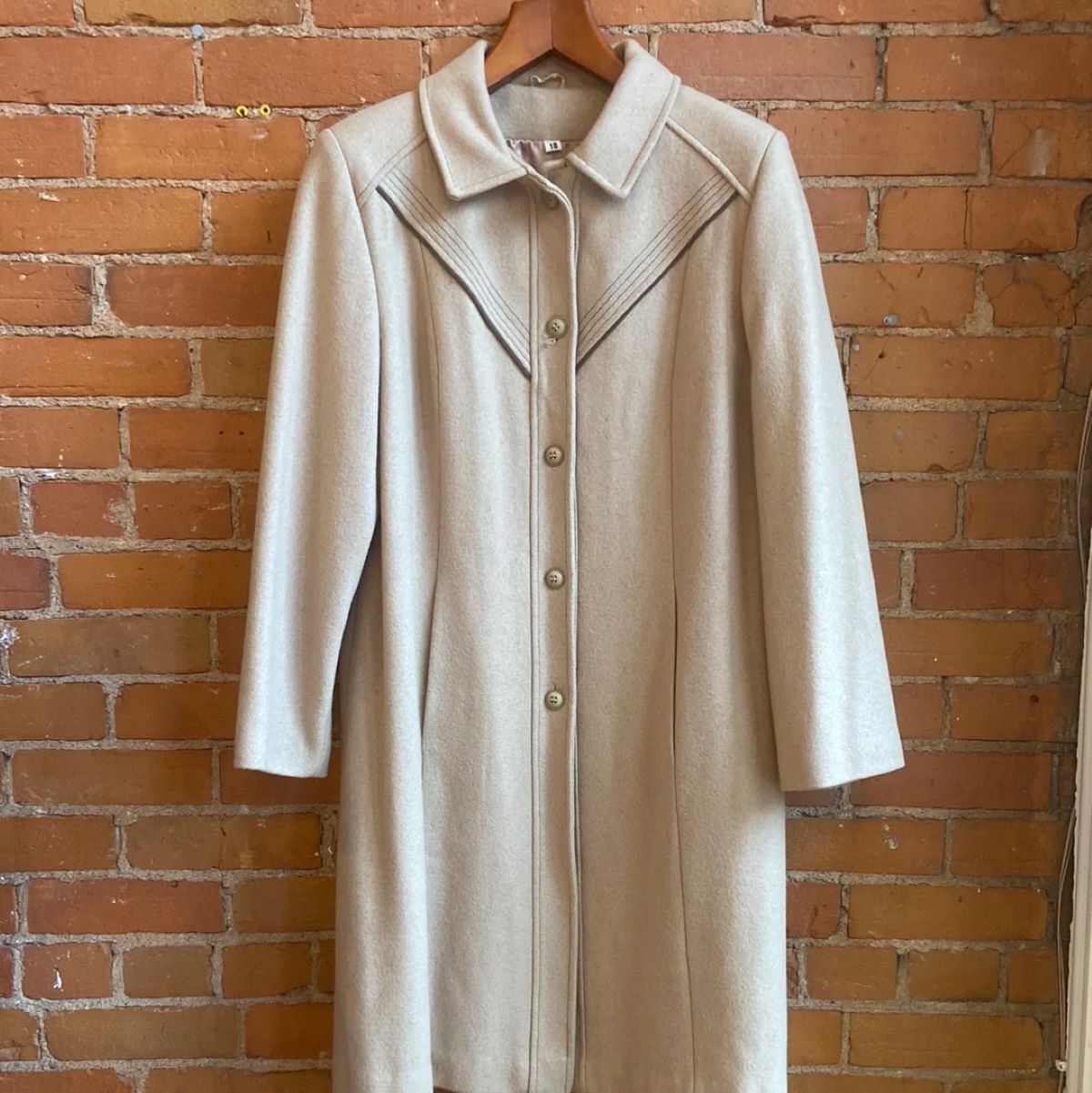
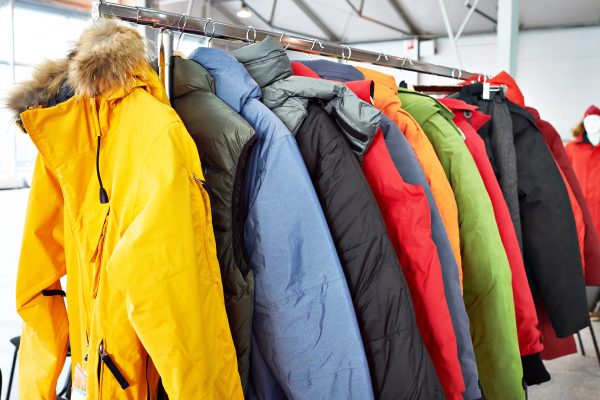
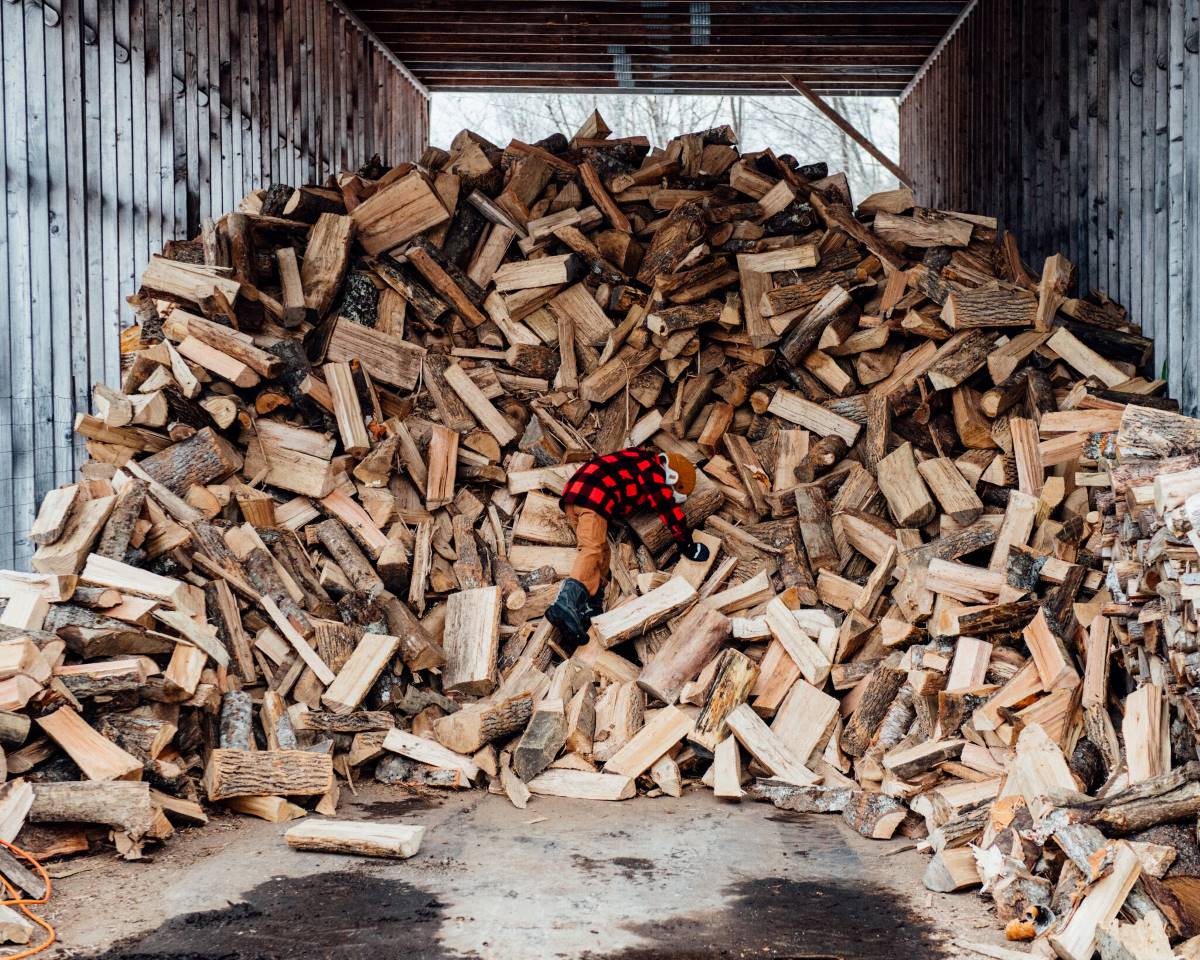
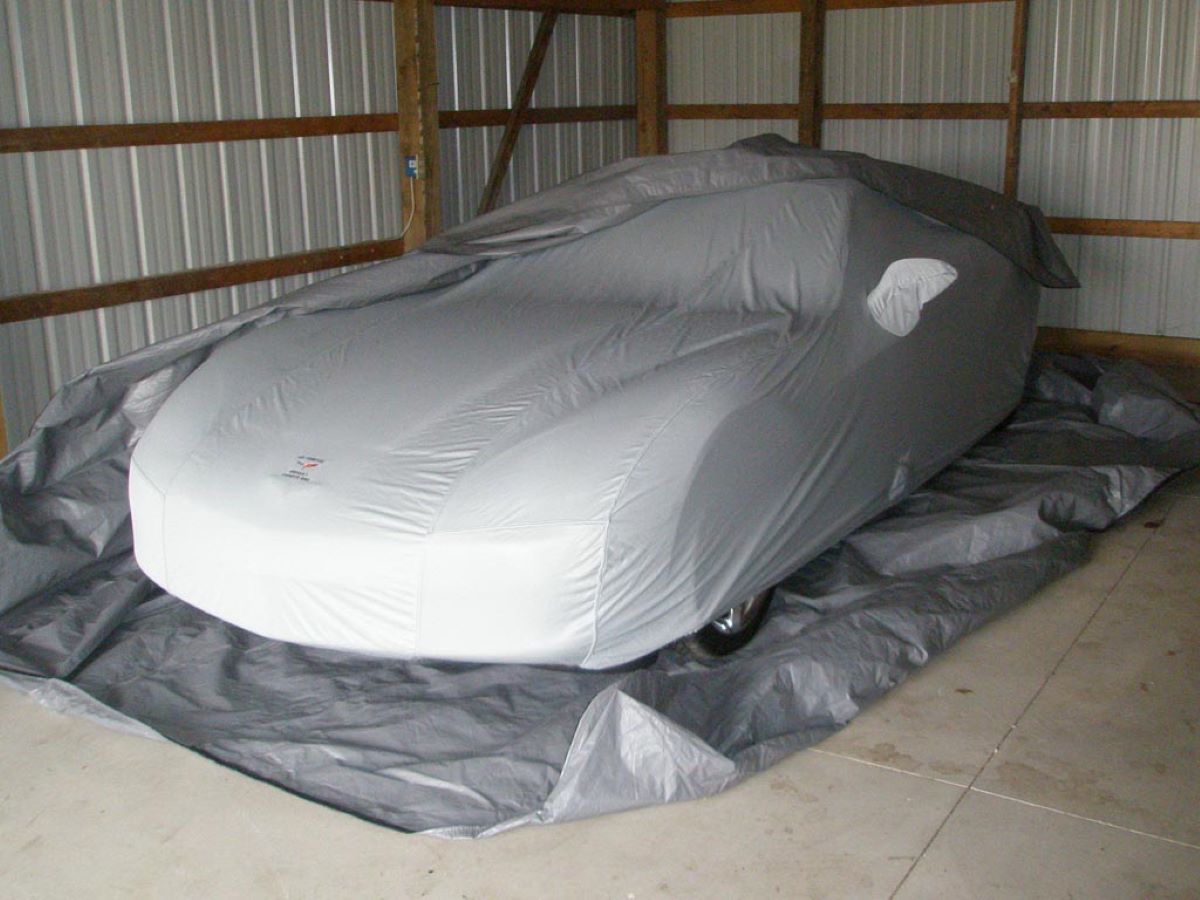
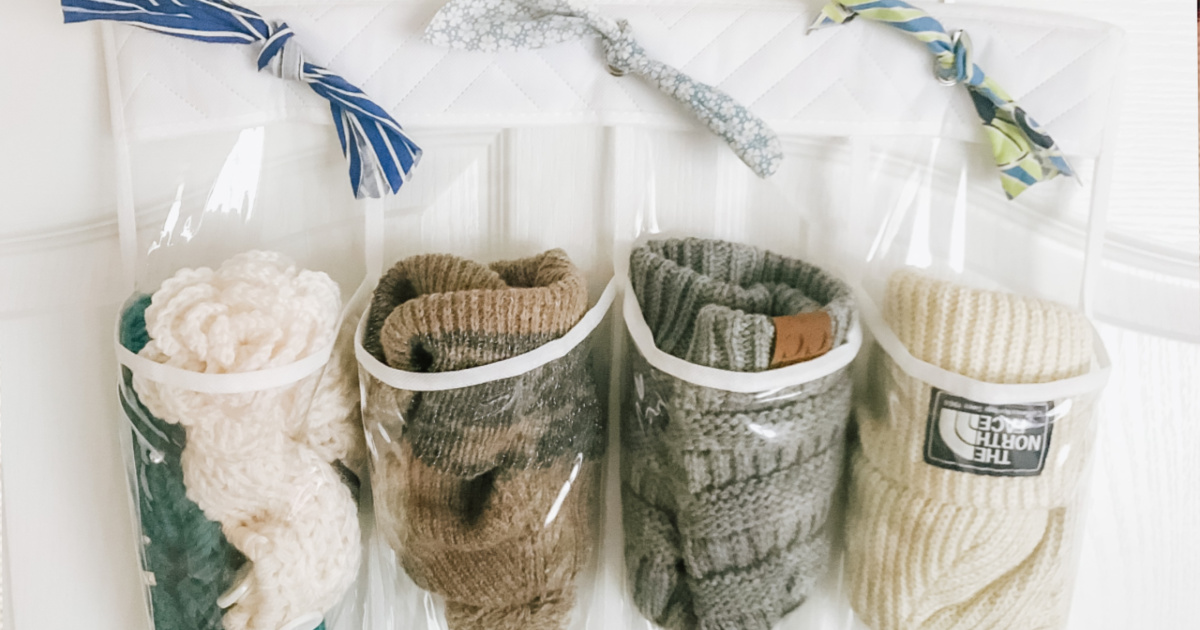




0 thoughts on “How To Store Winter Coats In Summer”